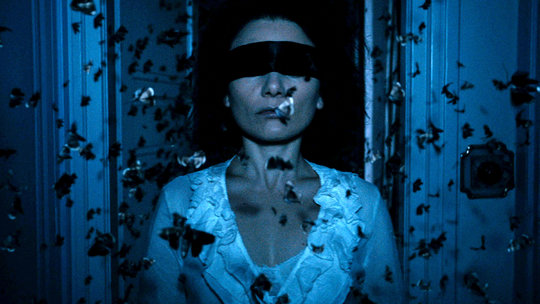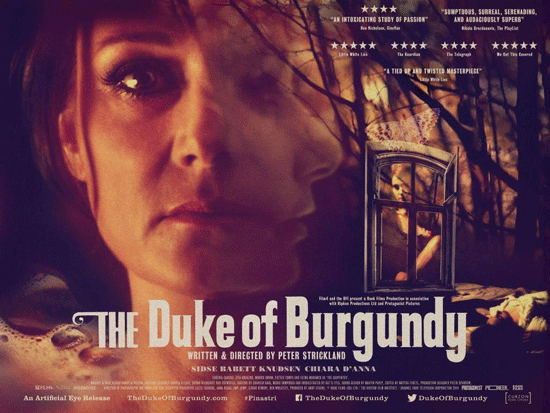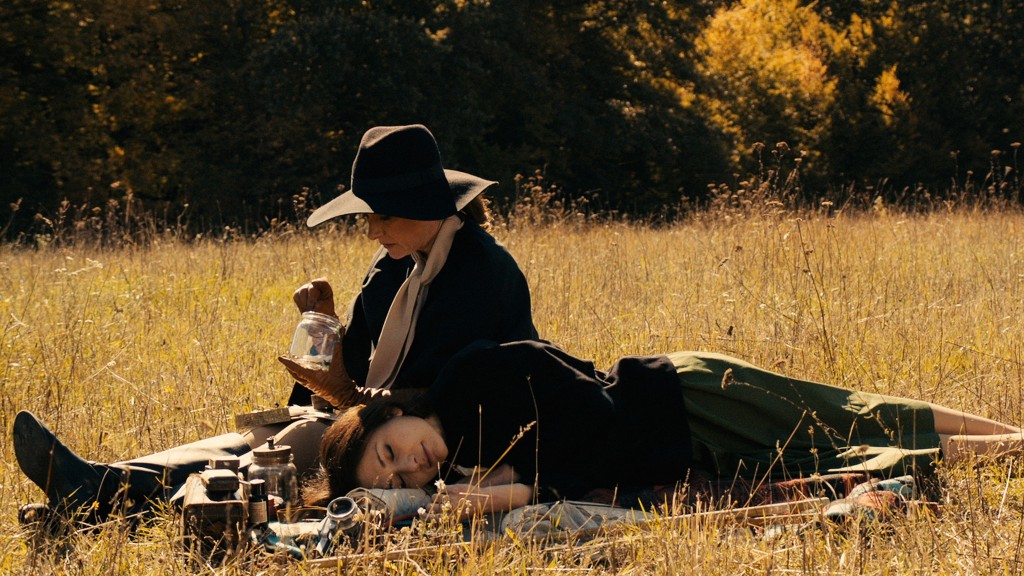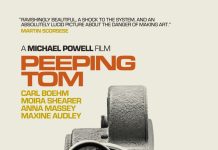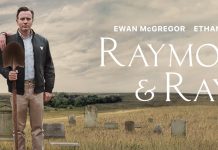Strickland is one of the most dynamic directors to come out of Britain in decades
Director: Peter Strickland
Starring: Sidse Babett Knudsen, Monica Swinn, Chiara D’Anna, Eugenia Caruso, Kata Bartsch, Fatma Mohamed, Eszter Tompa, Zita Kraszkó
Running Time: 104 minutes
Rating: 18
Release Date: Available on DVD and Blu-ray May 11th, 2015
Peter Strickland’s third film, THE DUKE OF BURGUNDY, establishes his maturation as a filmmaker. On show, here, is a distinctive, subtle, technical mastery paired with a strong literary sensibility; the film focuses on a relationship between two affluent lesbians with a penchant for insect collections. Like a novel of yore, their interplay meticulously defines the narrative while establishing the central characters.
It was clear with Strickland’s second film, BERBERIAN FILM STUDIO; he has an affinity and deep interest with audio and its centrality to film. Not only does he score the film in order to provoke drama and mental tumult, his protagonists constantly engage in an ambiguous flirtation with various sound and vocality. Strickland teased this out further in his sophomoric effort, where he built suspense within the mind of the protagonist, with the meta usage of the real sounds of the horror genre – e.g. the mundane actions like chopping water melons.
Intriguingly, Strickland is clearly influenced by 70s euro-sleaze; references to Italian suspense and the less slasher-orientated work of Dario Argento populate the film, throughout, but at its core it’s a serious, literary narrative.
The opening credits stop and start with sepia and crimson filter dissolves, echoing macabre films of yesteryear. The vivid lighting of the house in the dark sometimes reaches the contrasts found in the dance complex of, say, a suspiria. Similarly, ethereal retro music leaves the viewer unnerved.
Stylistically, THE DUKE OF BURGUNDY is an aesthete’s dream – meticulously refined, delicate as a moth’s wing, with its literary influence part-baroque, part Joris-Karl Huysmans. Specifically his books Against Nature and The Damned. The story of an upper-middle class aesthete involving herself in a cult of refined and conservatively dressed lip stick lesbians is Huysmans through and through.
The film’s depth is derived from the multi-faceted relationship between Cynthia and Evelyn. On the one hand the film probes the fuzzy demarcation between Sadist/masochist and Domme/Sub binaries, exploring the constant power-struggles. In Cynthia’s determination to remain youthful, the film looks to challenge the importance of authority in a morally rigid time setting. Additionally, Burgundy plays with class differentiation as a fetish, with Strickland touching on Hegelian/Kojevian notions that the slave might play more of a part than the master realizes.
Ultimately, both women are caught up in an elaborate role-play, slaves to a repetitive cycle of specific proclivities, leaving them dominated by narrow passions, regardless of how regal and formalized they might appear on the surface. THE DUKE OF BURGUNDY is a deft, quirky examination of excessive desire. It’s heavily indebted to literary sensibilities that require us to connect with the nuances of character, and is another stark reminder that Strickland is one of the most dynamic directors to come out of Britain in decades.
Verdict


